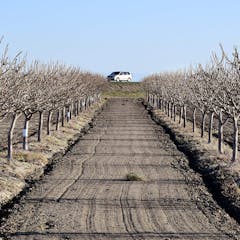
Articles on Drinking water
Displaying 41 - 60 of 148 articles

Rough surf and nearshore currents lead to about 50 drowning fatalities annually in the Great Lakes.

Cleaning up the Great Lakes was a big job when the US and Canada undertook it in 1972. Today it’s far more challenging.

Evidence suggests that involving marginalised communities in setting priorities and designing collective action can lead to improved health outcomes.

Ironically, excess rain can lead to a shortage of clean drinking water in times of storms and flooding.

It will cost tens of billions of dollars to find and remove all the lead service lines that deliver water to US homes and schools. A public health expert explains why he sees it as money well spent.

Should the U.S. help low-income households afford water service, as it does with heating and groceries? Chile does. An economist explains how it works there and how it could work here.

Our brain is amazing. It tells us when we need to drink more water. And one of the ways it tells us is to make us feel thirsty.

The Centers for Disease Control has announced a new, stricter standard for lead poisoning in children, which will more than double the number of kids considered to have high blood lead levels.

Adding fluoride to water is shown to be an effective and safe way of reducing tooth decay in a population.

High levels of lead were unexpectedly found in 14 UK schools’ drinking water: so how much do we really know about what’s in our pipes?

It seems all party leaders can agree, water advisories in First Nation communities need to end. If there is agreement, then isn’t it time to stop making it a campaign promise and make change?

The US has one of the highest groundwater use rates in the world. When wells run dry, households may opt to conserve water, find new sources or sell and move.

President Biden has proposed spending $45 billion to replace every lead water pipe and service line in the nation. A public health expert explains why he sees this as a worthwhile investment.

The federal government’s announcement that boil-water advisories on First Nations won’t end until 2023 at the earliest isn’t surprising. The true crisis is much greater than widely known.

New research finds that tap water avoidance is on the rise in the US, especially among minorities. An expert on water and health calls for better public education about water quality and testing.

Women and girls are forced to spend hours each day hauling water for their households. Beyond harming both physical and mental health, this takes time away from economic activities and caregiving.

Water privatization is often seen as a solution to municipal budget shortfalls and aging water systems.

The damage mining causes to Sydney’s water supplies is unsustainable, and the law has failed to stop it.

A new study shows how toxic chemicals like benzene are leaching into water systems after nearby fires. The pipes don’t have to burn – they just have to heat up.

Infrastructure for the mining industry has been prioritized over community-infrastructure for essential human needs.
